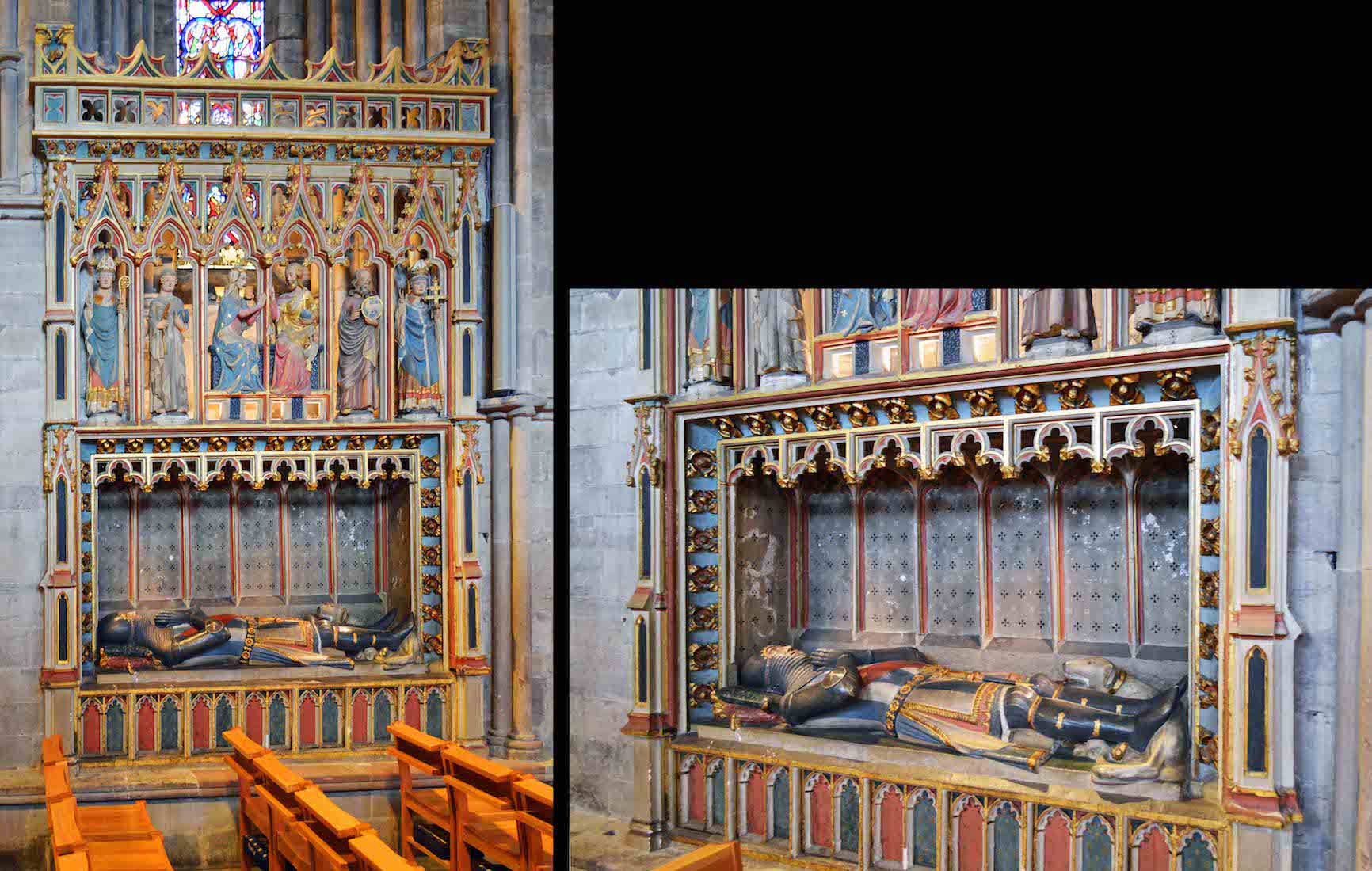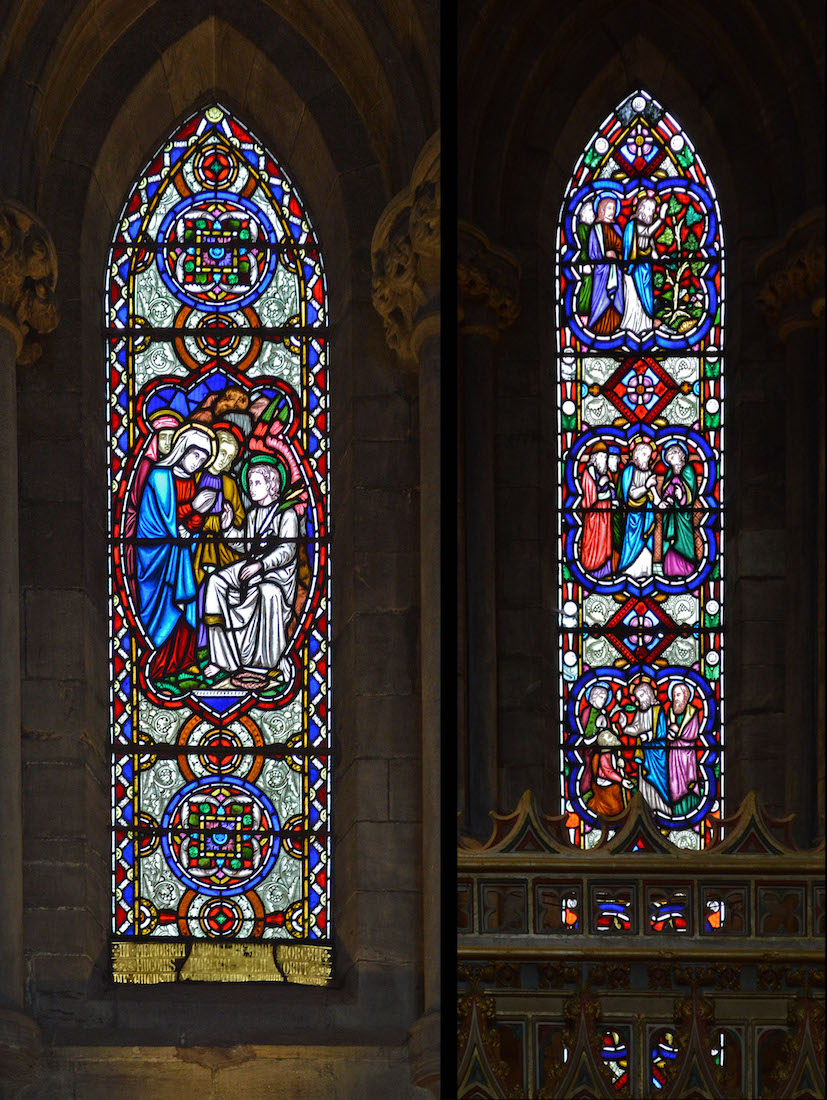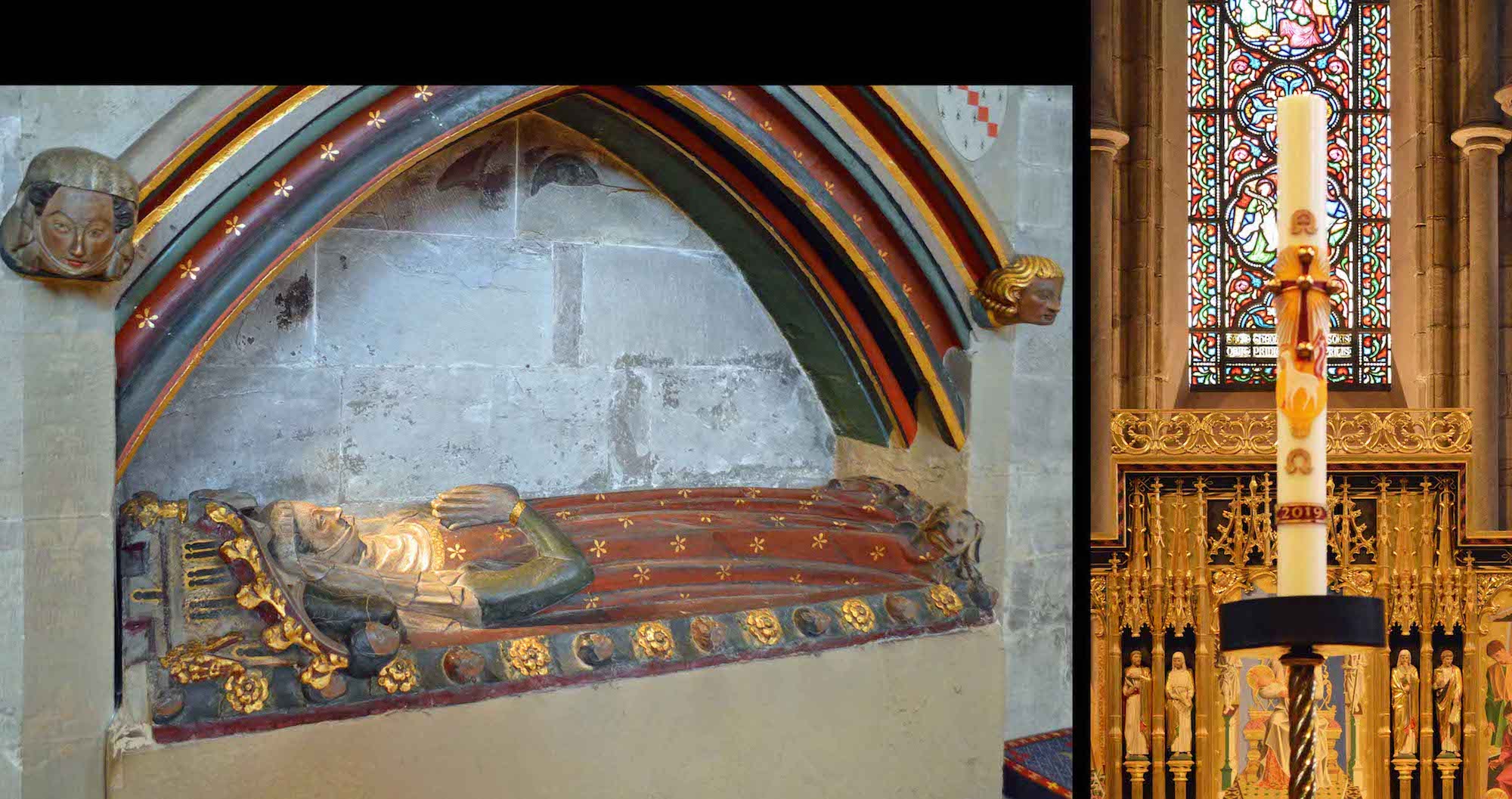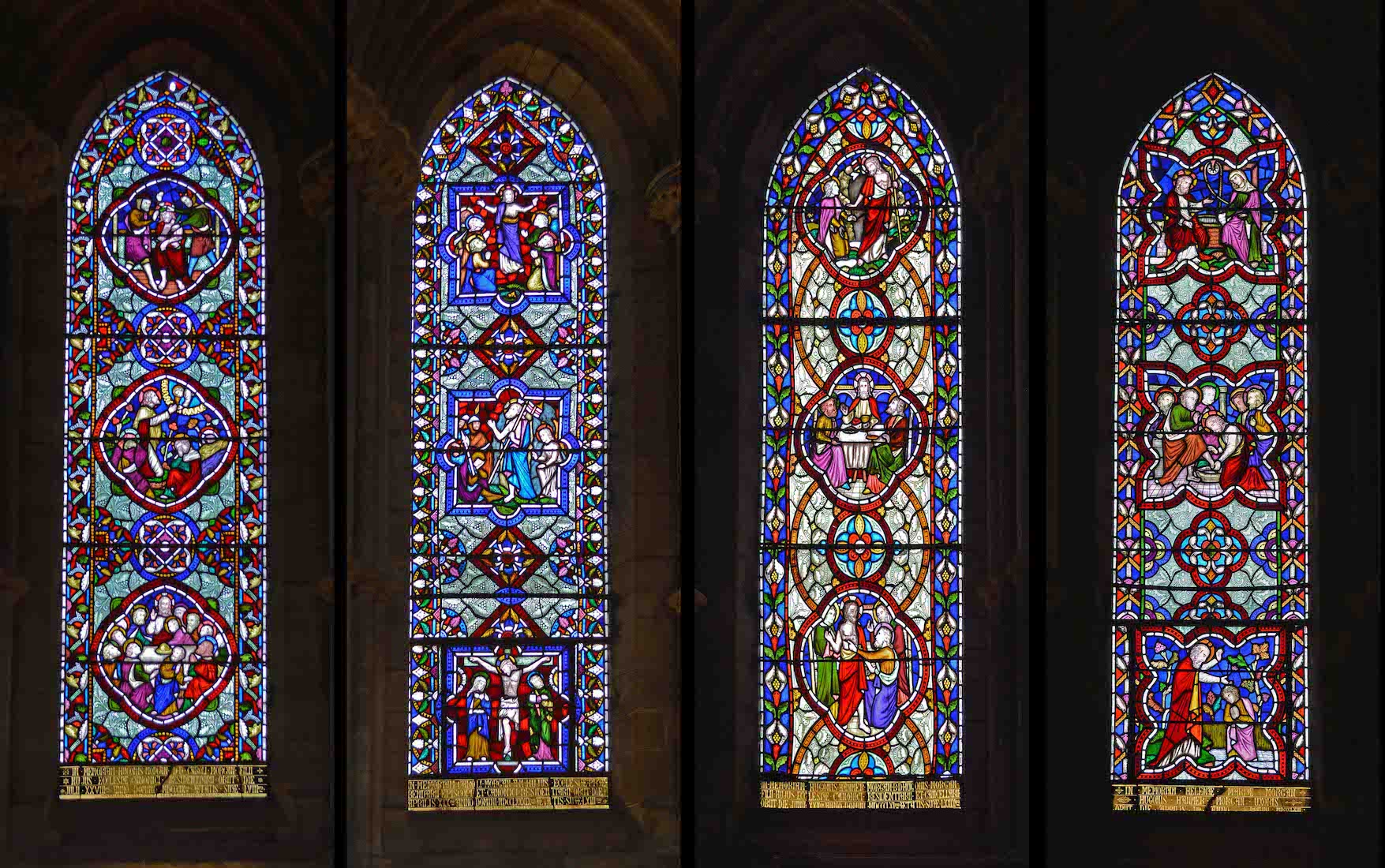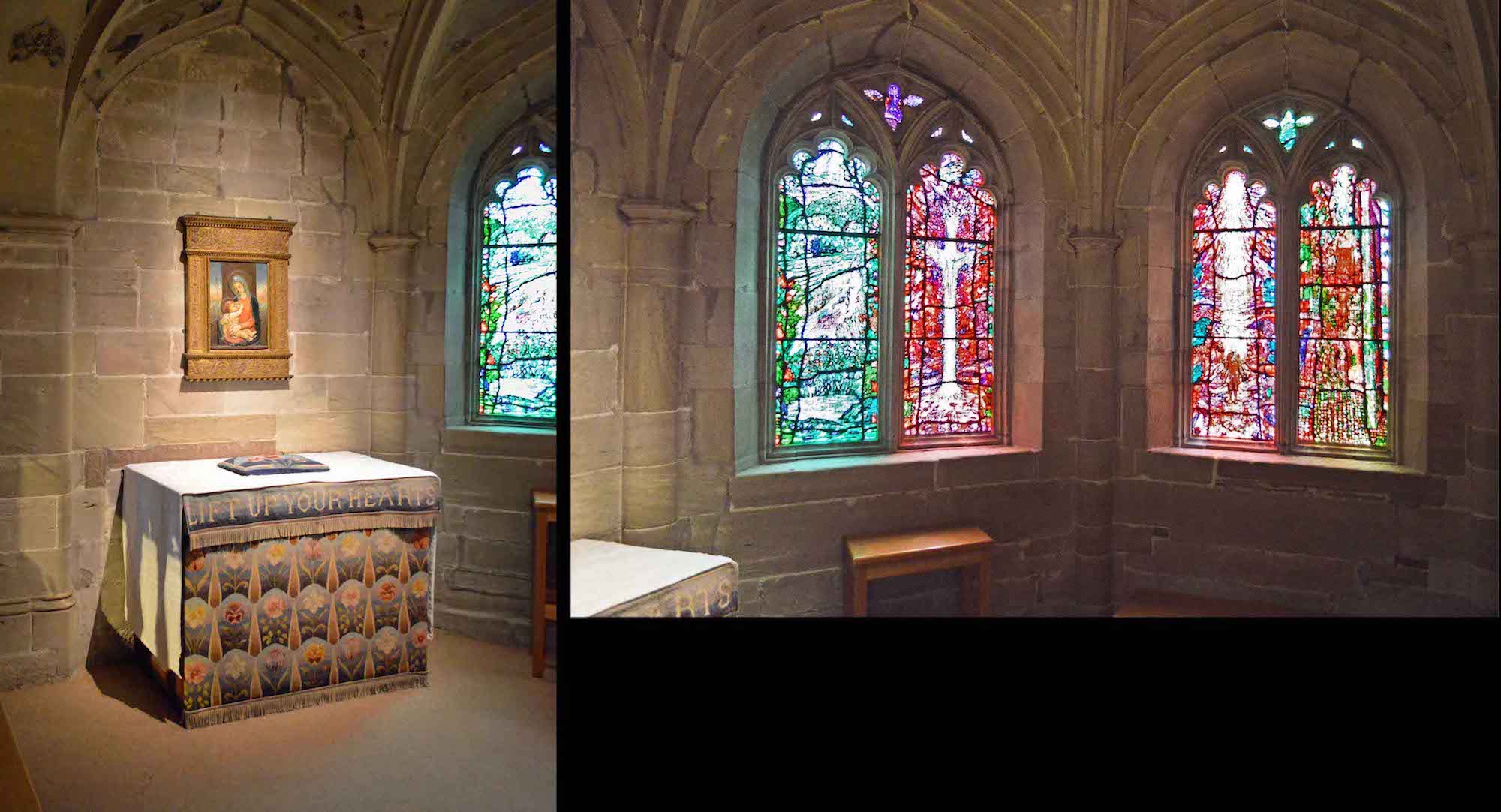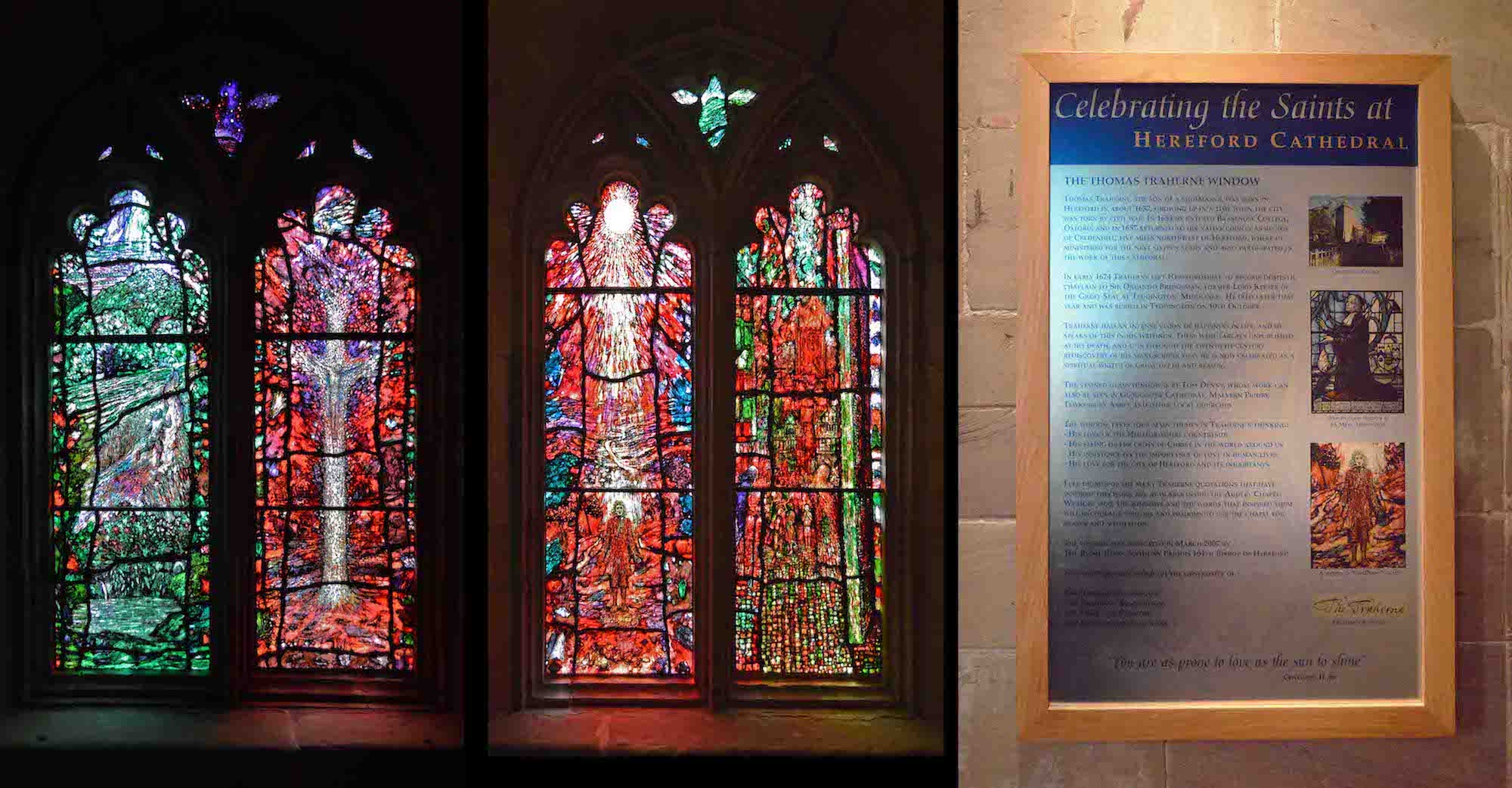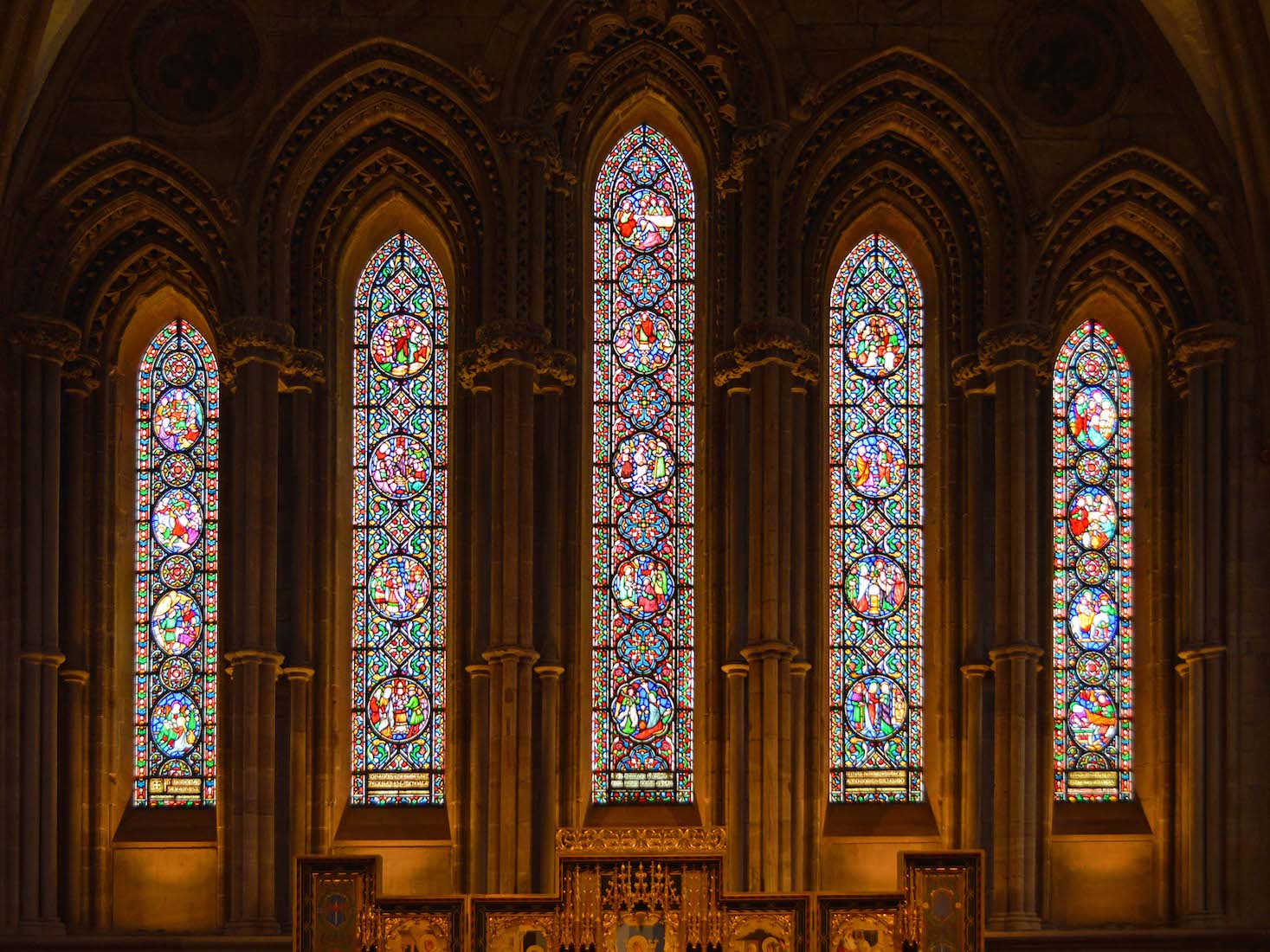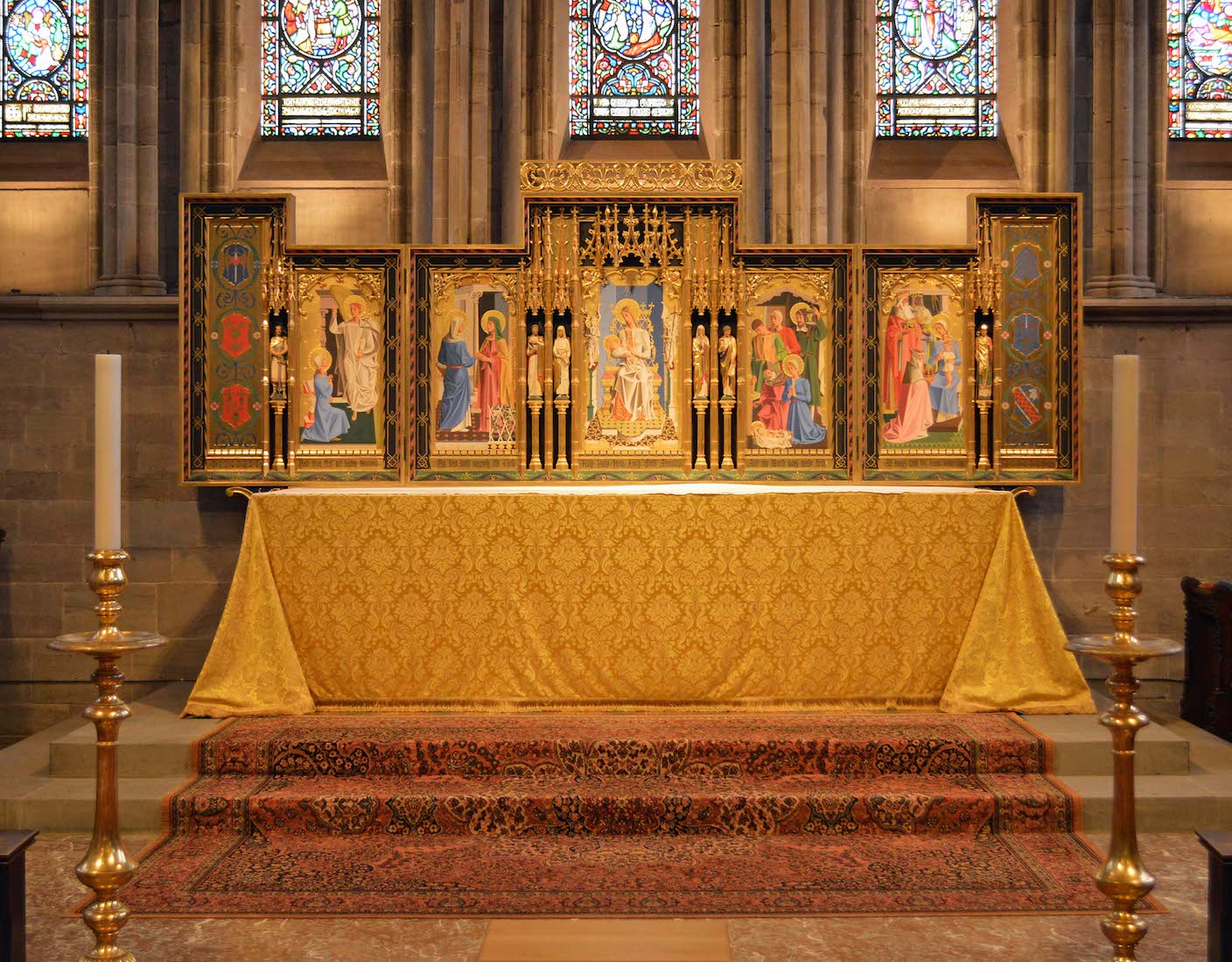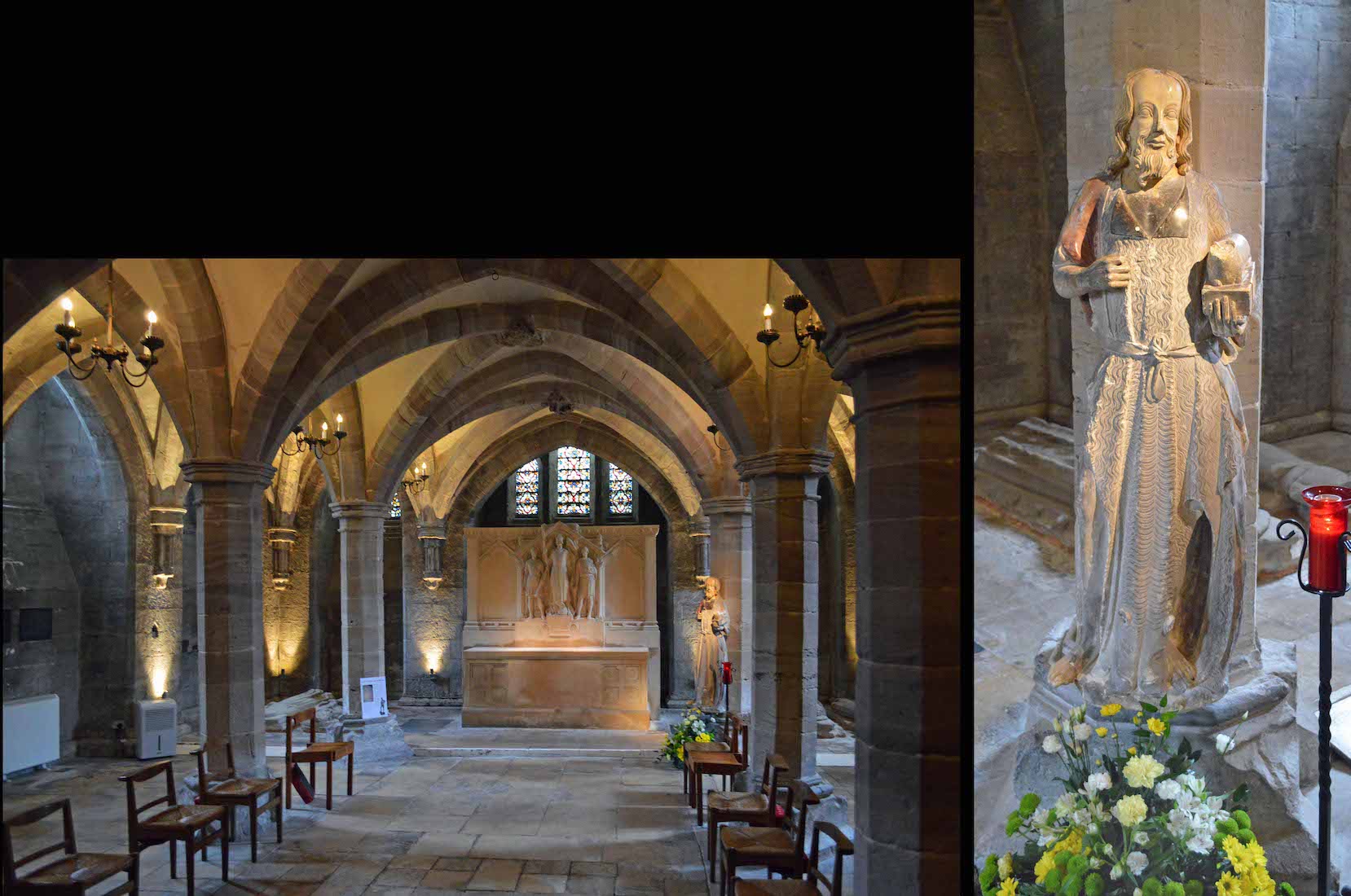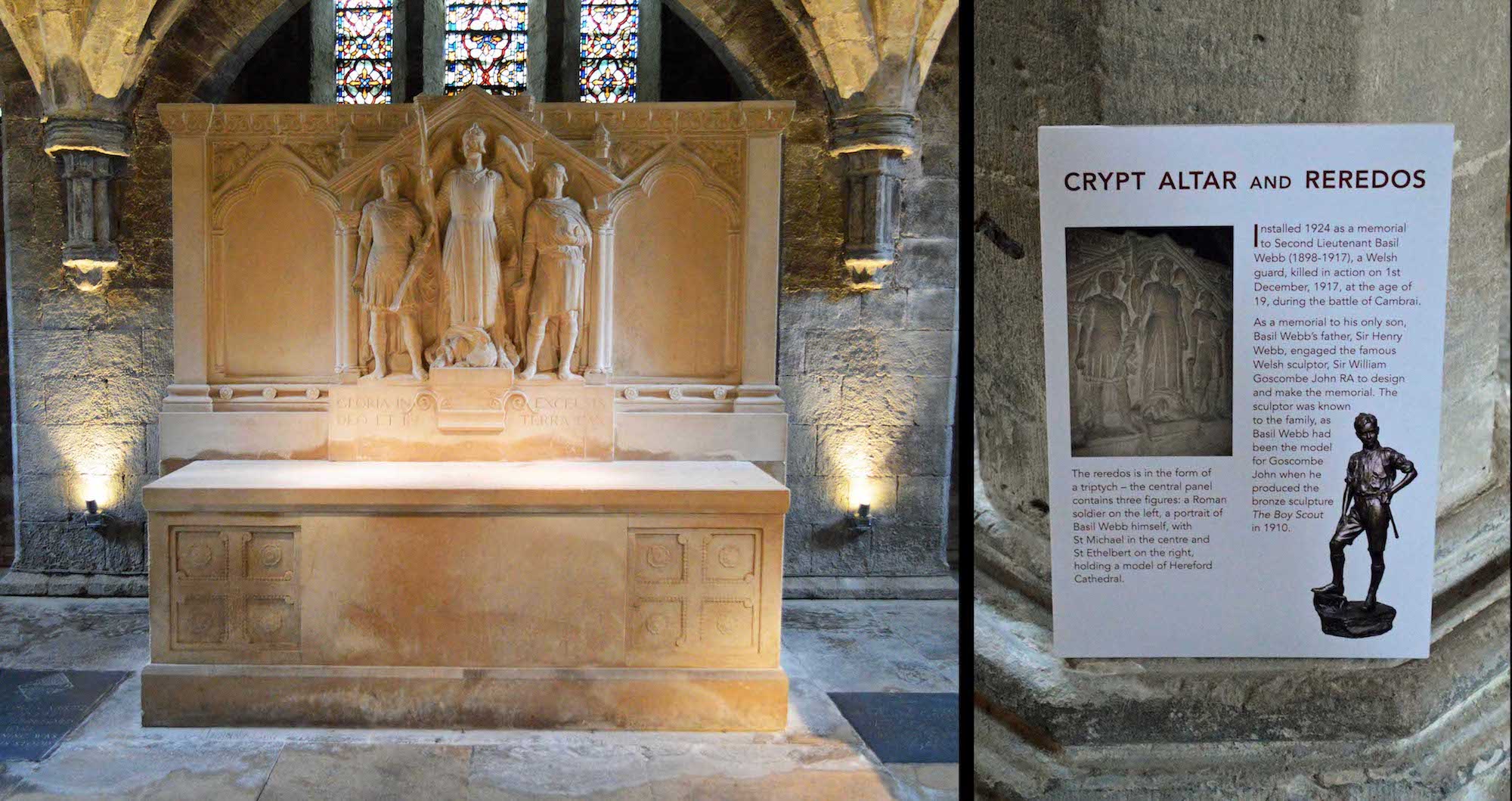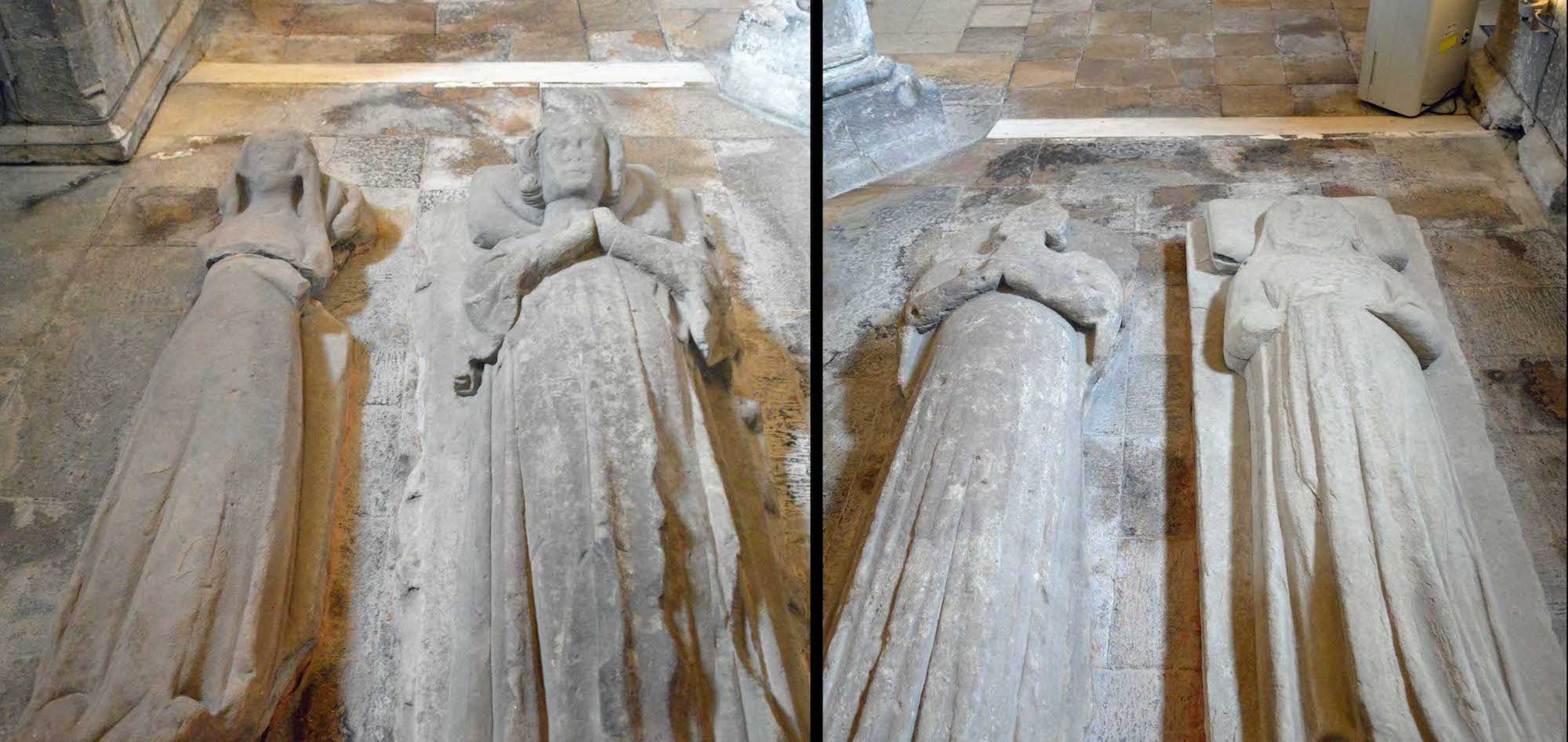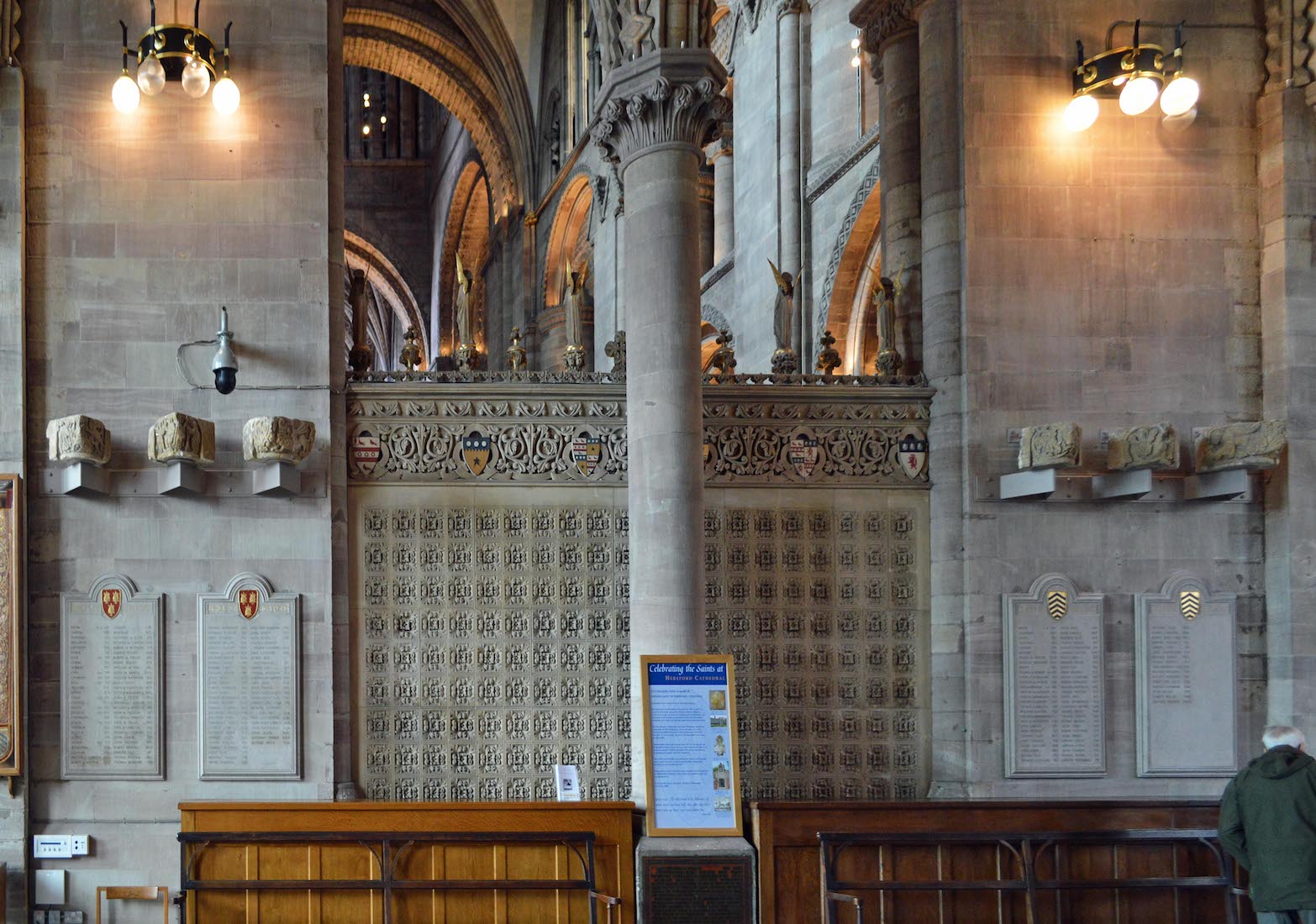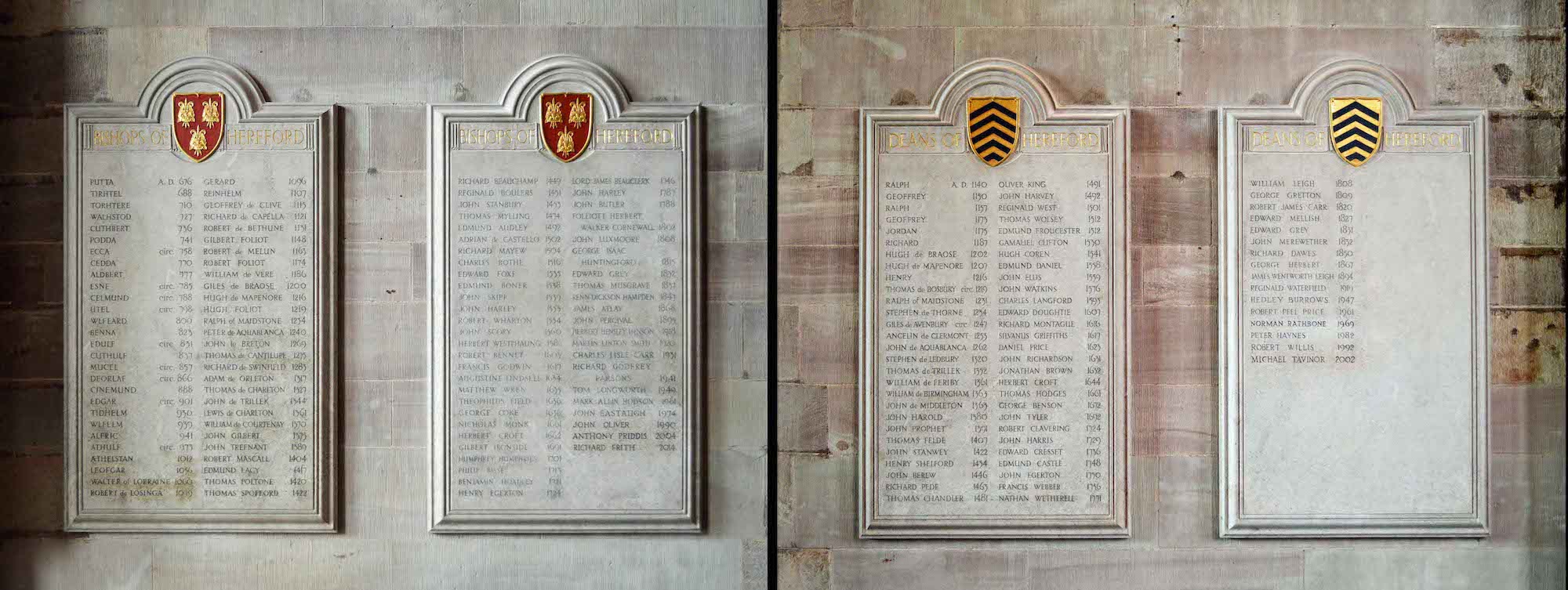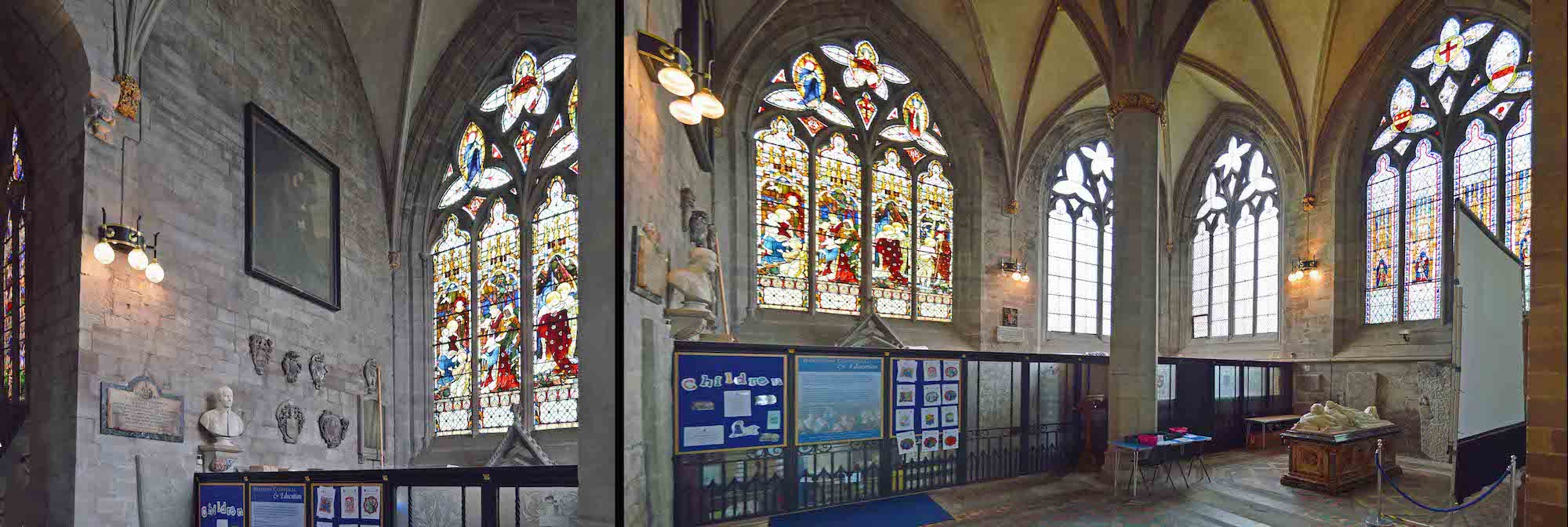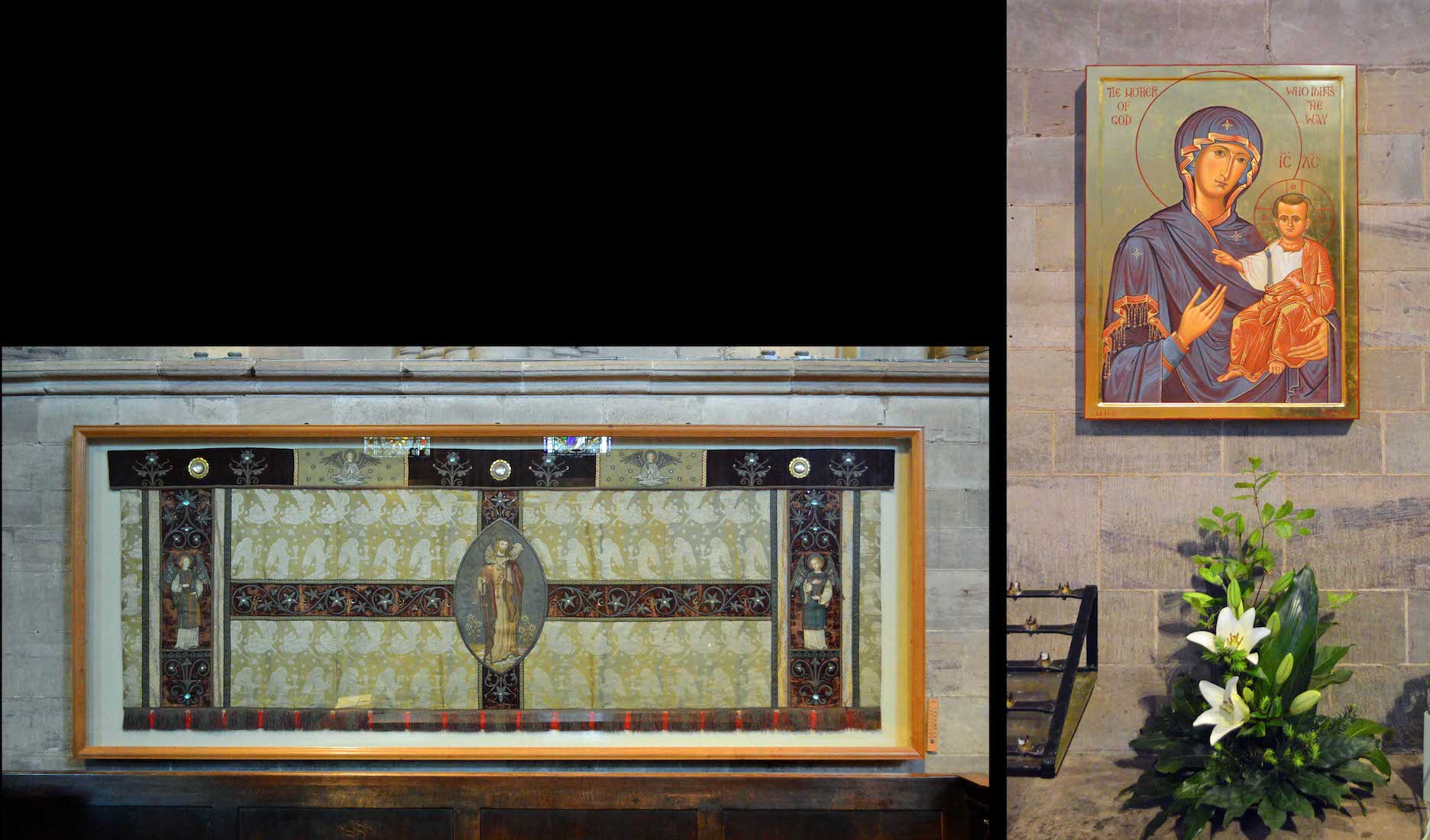
The displayed altar cloth is the Gilbert Scott frontal manufatured by Louis Grossé of Bruges in 1873. At centre is an image of Christ carrying the lost sheep, and surrounded by worshipping angels. The icon at right is a depiction of the Virgin Mary holding the Child Jesus at her side while pointing to Him as the source of salvation for humankind. The Virgin’s head inclines towards the Child, who raises his hand in a blessing gesture. In the Western Church this type of icon is sometimes called ‘Our Lady of the Way’. PLAN
42. LADY CHAPEL WINDOWS I
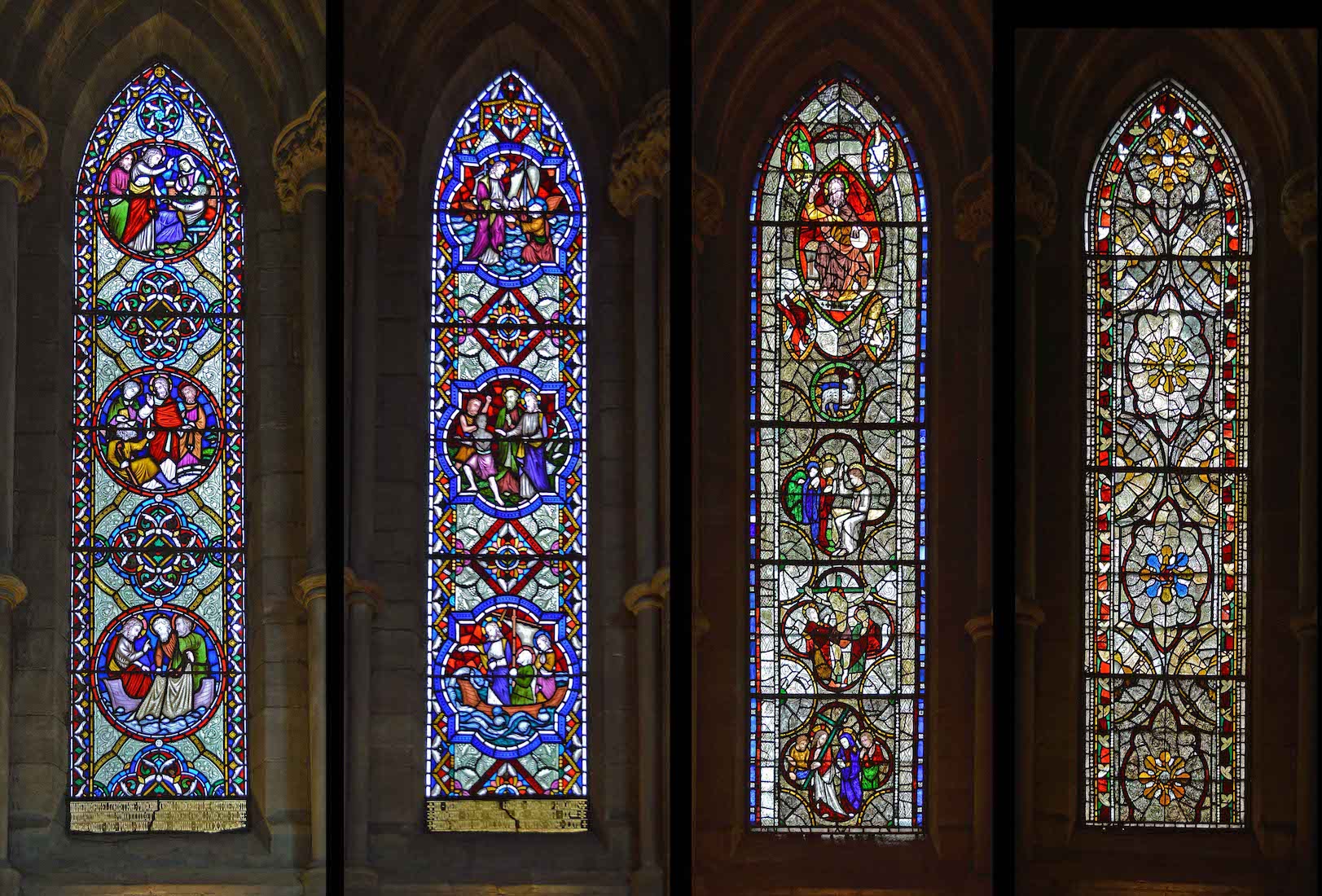
The two windows at left show fairly easily deciphered scenes from the life of Christ: raising the widow’s son, healing the cripple, telling the disciples to fish from the other side; stilling the storm, healing the demoniac and rescuing Peter from the sea. The two lancets at right depict the death, resurrection and ascension of Christ, and an abstract floral arrangement.
43. TOWARDS THE LADY CHAPEL ALTAR
So now we have moved towards the Lady Chapel altar. Ahead is the altar and the East window. On the left we notice the St Thomas banner, an elaborate effigy in a decorated setting, a further effigy and a Paschal candle. Then there are four more side windows, two to the left and two to the right, and finally on our right the entry to the Audley Chantry Chapel. [Photo Credit : Cathedral photo] St Thomas was Thomas de Cantilupe – Lord Chancellor of England and Bishop of Hereford. He was canonised in 1320 by Pope John XXII.
44. CHAPEL EFFIGY
This is thought to be the tomb of Peter de Grandison (d.1352). The knight was brother to Bishop Grandison of Exeter and is shown with his loyal dog at his feet. The monument is surmounted by a square canopy above which is a screen framing six medieval statues representing the Coronation of Mary flanked by four saints (St Thomas of Hereford, St Ethelbert, St John the Baptist and St Thomas of Canterbury). The heads of Mary and Jesus are more recent restorations.
45. LADY CHAPEL NORTH WINDOWS
There are two stained glass windows on this side just by the knight effigy. The scenes depicted here are not altogether clear. There are three such scenes in the right lancet which are probably incidents from the ministry of Christ. The young man in the left lancet could be a young Jesus with his mother.
46. SECOND EFFIGY AND PASCHAL CANDLE
This is the effigy of Johanna de Bohun, Countess of Hereford, dating from 1337. She was the daughter of Alan Plukenet (Plunkett) and while she was apparently Countess of Hereford, it is not entirely clear which earl she was married to: Humphrey, 6th Earl of Hereford seems to be the most likely candidate, as he died without issue. It is a beautiful example of a painted medieval effigy. The tomb was opened in 1846 and she was found to still have a profusion of yellowish red hair, though her bones were much decayed.
47. CHAPEL WINDOWS
The two lancets shown at left here are left of the altar, and the two lancets at right are to the right. The windows at left, viewed from bottom to top, give the events from the Last Supper through to the ascension of Christ. The third lancet depicts three post-resurrection scenes: the Risen Christ appearing to Mary, the Road to Emmaus story, doubting Thomas. The fourth lancet has three scenes with a water theme.
48. TO THE AUDLEY CHANTRY
The decorated screen to our right partly conceals the entrance to the Audley Chantry Chapel. This chantry was erected at the end of the 15th century by Edmund Audley, who, after being moved to Salisbury, built another there, where he is buried. His chantry here is pentagonal in shape, and has an upstairs gallery.
49. AUDLEY CHANTRY CHAPEL
This is a view of the lower level with its altar frontal reading ‘Lift up your hearts’. Above the altar is a small painting of the Madonna and Child. The windows are colourful and modern.
50. CHANTRY WINDOWS
These new stained glass windows, installed in 2007 in the Audley chapel, were designed by Tom Denny. The subject matter was inspired by the writings of Thomas Traherne (c1637-74) and his association with Herefordshire. There are images of the tree of life and the crucified Christ.
51. LADY CHAPEL EAST WINDOWS
The five stained glass windows at the East end of the Lady Chapel are by Cottingham, and are a memorial to past Dean of Hereford, John Merewether. Regretfully, Merewether seems to be remembered mostly as the brother of Mary Anne, who eloped with Samuel Sebastian Wesley (1810–1876).
52. LADY CHAPEL ALTAR
The simple Lady Chapel altar is covered with gold cloth and flanked by two large candlesticks. Behind is a delightful reredos with five scenes from the life of Mary: the Annunciation, the Visit to Elizabeth, the Nativity, the Visit of the Shepherds, and the Visit of the Wise Men. We now leave the Lady Chapel, returning to the King Ethelbert shrine, and the steps down to the crypt.
53. DOWN TO THE CRYPT
Close to the shrine and on the South wall is an easily missed tomb of some interest: the Richard Swinefield tomb. It is decorated with little pigs in the Hereford colours: a play on Swinefield’s name [Photo Credit: Aidan McRae Thomson]. So to the crypt – sometimes called Golgotha, referring to its early use as a charnel house. It is the most recently-built crypt of any existing cathedral in the country (1200s). Its purpose may have been to provide an area of worship for the parish church of St John the Baptist, which was established in the Cathedral by the late 14th century.
54. THE CRYPT, JOHN THE BAPTIST
The crypt is quite small. As we enter, our focus is drawn to the altar with the three standing figures behind, and a larger statue of John the Baptist to the right. In the far left hand corner some effigies are lying. The statue of John the Baptist dates from the 15th century, although the head has been renewed.
55. CRYPT ALTAR
The altar commemorates those who died in World War I. From the left, the three figures are a Roman soldier, the Archangel St Michael, and St Ethelbert holding a model of Hereford Cathedral. The altar and reredos were installed as a memorial to Second Lieutenant Basil Webb (1898 – 1917), a Welsh guard, killed in action in 1917 during the Battle of Cambrai.
56. RECLINING EFFIGIES
Lying in the Northeast corner of the crypt are two pairs of unidentified effigies, which appear to be very old.
57. WEST WALL OF THE CROSS AISLE
We emerge from the crypt up the flight of steps, and before us is the West wall of the retrochoir. At centre is a patterned block wall surmounted by angels – the back of the sanctuary reredos, and there is a list of names on either side.
58. LISTS OF BISHOPS AND DEANS
The lists turn out to be Cathedral Bishops at left, and Deans at right. The first Bishop listed is Bishop Putta in AD 676. On the other side, Dean Ralph has the earliest date at 1140. He and Dean Geoffrey appear to have alternated until 1175.
60. NORTH AND EAST WINDOWS OF TRANSEPT
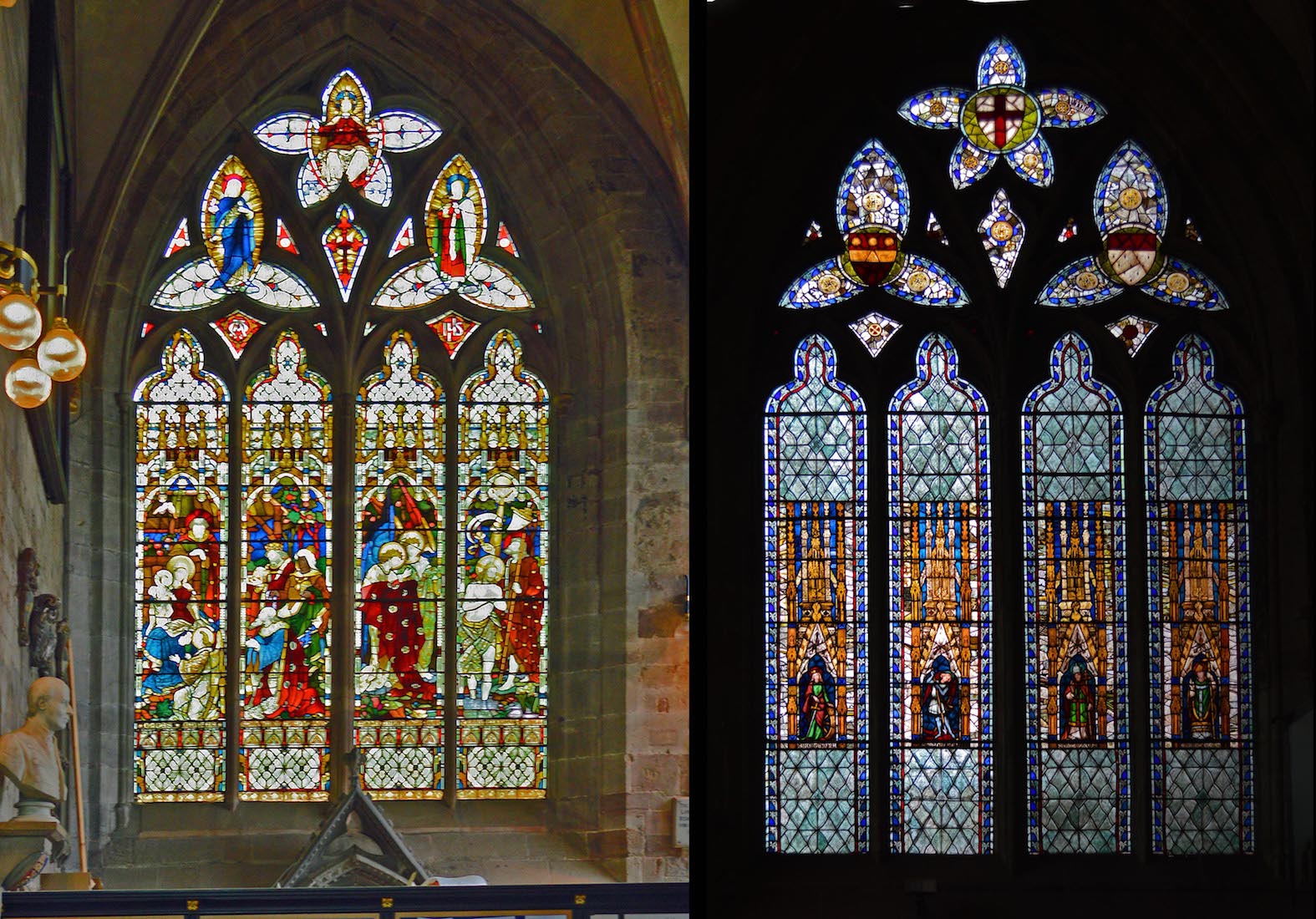
The North window (left) shows four scenes, including the baptism of Christ in the right-hand lancet. The East window at right was restored in the Victorian period (the figures are recreations), but retains a substantial amount of original 14th century stained glass.



